It's my pleasure to welcome Louise Marley to the salon, as your guide to Penrhyn Castle!
---oOo---
Sugar, Slavery and Slate (The Story Behind Penrhyn Castle)
I’ve always been fascinated by castles and big old houses. Although I write contemporary fiction, I usually manage to squeeze an old manor house or castle somewhere into my novels. Penrhyn Castle first caught my eye when I moved into a house that had a beautiful view over the Menai Straits and Port Penrhyn, and the castle’s majestic keep could just be seen above the trees. It was obviously built by someone with more money than sense (as my Grandmother would have said) but, as I learned later, exactly where that enormous wealth came from was a story in itself.
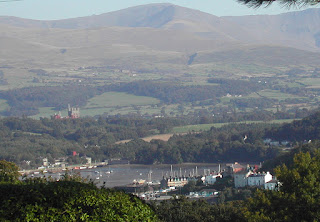 |
| View of Penrhyn from Anglesey |
Originally a fortified manor house, complete with tower, Penrhyn was built by Gwilym ap Gruffydd in the early part of the 15th century, on land which had once belonged to his mother. After his death the house and lands passed down through the Griffiths family without incident, until inherited by Pyrs Griffith, who was alleged to be a pirate.
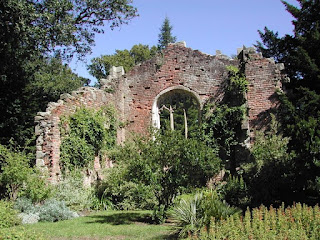 |
| The Medieval Chapel at Penrhyn Castle |
Pyrs Griffith was supposed to have taken part in the campaign against the Spanish Armada in 1588, and allegedly built a secret tunnel between his house at Penrhyn and the nearby port. He wrote a lot of poetry about the sea and became involved with expensive litigation relating to illegal possession of his lands – mostly because he was never home to watch over them. In 1622 even his father-in-law, Sir Thomas Mostyn, lost patience with him and arranged for him to be sent to the Fleet prison for debt. The house and much of the estate had already been mortgaged to Ievan Lloyd. He sold it on to a distant relative of Pyrs, John Williams. The estate was passed down through the Williams family, gradually divided between the various heirs and sold off.
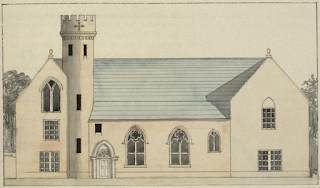 |
| The Manor House at Penrhyn before 1782 |
John and Henry Pennant were two brothers who had made their fortunes from sugar plantations in Jamaica. Like many plantation owners, they were keen to leave the management to others and return to Britain, where they used the profits from their plantations to buy property and land – including the divided portions of the Penrhyn estate. When Henry Pennant died, his share passed to his brother John. On John’s death everything went to his only son, Richard Pennant, who had married the heiress to another portion of the estate, Anne Warburton. In 1785, Richard Pennant bought back the last remaining portion and the Penrhyn estate was reunited for the first time since 1713.
 |
| Richard Pennant, 1st Baron Penrhyn of Penrhyn (Thompson) |
As well as his estates in Wales, Richard Pennant owned six sugar plantations in Jamaica (and over 600 enslaved workers) although he never visited there. He instructed that he did not wish his slaves to be overworked but still opposed the abolition of slavery. He was Chairman of the West India Committee and chair of its special sub-committee, set up in 1788 to organise opposition to abolition. Their tactics included producing pamphlets supporting the slave trade and explaining its ‘economic benefits’. The profits from his sugar plantations were used to develop the slate quarries on the Penryn estate, and to build a road between the quarries and Port Penrhyn, enabling the slate to be shipped to Ireland, Liverpool, Bristol and London.
While the building trade was supplied with the ever-increasing Penrhyn slate, Richard Pennant set about modernising the manor house with the help of architect Samuel Wyatt. The house and medieval chapel had remained more-or-less unchanged since the 15th century. Although they decided to keep the medieval cellars and one spiral staircase, the original great hall was turned into an entrance hall. Turrets and crenellations were added, along with a new park gateway in the form of a triumphal arch.
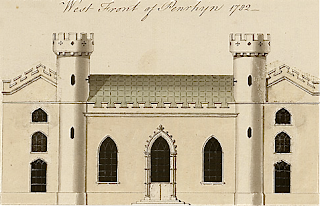 |
| Penrhyn after 1782 |
When Richard died in 1808, the estate at Penrhyn passed to a distant cousin, George Hay Dawkins, who changed his surname to Pennant under the terms of Richard’s will. Unlike some Jamaican plantation owners who suffered after the abolition of slavery in 1807, the Pennant plantations continued to prosper. George Dawkins-Pennant was now immensely wealthy. But the house he’d inherited at Penrhyn seemed insignificant when compared with his neighbours. Lloyd Bamford Hesketh, for example, had recently commissioned a fairy-tale castle called Gwrych near Abergele. So George commissioned the architect Thomas Hopper to reimagine Penrhyn.
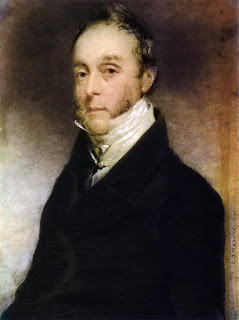 |
| George Hay Dawkins-Pennant |
How much of the idea to turn the manor house into a fantasy castle was George’s, and what was suggested by Thomas Hopper, is unclear. However, Thomas had recently begun work on another neo-Norman castle at Gosford in County Armagh, which was remarkably similar. Work on the house at Penrhyn began in 1821. Over ten years later, the thirteen-year-old Princess Victoria visited and found it ‘not near finished yet’. George’s brother-in-law joked, ‘Mr Hopper used to come in after breakfast and ask leave to add another tower’.
First to go up was a park wall – seven miles worth – which displaced six farms and the main road. The castle itself was built of Penmon limestone, which contains fossils. Large quantities of slate from the Penrhyn quarries were used for the roof, the stables (stalls and mangers), and for paving the yards. The ‘Norman’ furniture was made by the estate carpenters and no expense was spared in decorating the interior. It took ten years just to build the main staircase. The hot air system, which heated the great hall and neighbouring rooms, was one of the first in Britain and each dressing room was equipped with a bath, with piped hot and cold water. There were also water closets on every floor. Lighting was first by oil, then gas, and electricity was supplied in 1827-28.
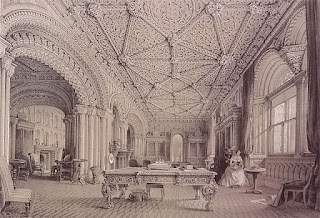 |
| The Library at Penrhyn Castle |
Not everyone was impressed, however. On his visit in 1841, the diarist Charles Greville described Penrhyn as:
“A vast pile of building, and certainly very grand, but altogether, though there are fine things and some good rooms in the house, the most gloomy place I ever saw, and I would not live there if they would make me a present of the castle. It is built of a sort of grey stone polishable into a kind of black marble, of which there are several specimens within. It is blocked up with trees, and pitch dark, so that it never can be otherwise than gloomy.”
George Hay Dawkins-Pennant died at his home in London in 1840, only a few years after his fantasy castle was completed – and left over £600,000 in his will. His heirs were his two daughters, nicknamed ‘the Slate Queens’. The Welsh and Jamaican estates, worth £80,000, went to his eldest daughter, Juliana. Penrhyn Castle was passed on through her descendants until 1951, when it was given to the National Trust in lieu of death duties.
 |
| Penrhyn Castle (west front) |
About the Author
Louise Marley writes romantic comedy and romantic suspense. She lives in Wales, surrounded by fields of sheep, and has a beautiful view of Snowdon from her window.
Her first published novel was Smoke Gets in Your Eyes, which was a finalist in Poolbeg’s Write a Bestseller competition. She has also written articles for the Irish press and short stories for UK women’s magazines such as Take a Break and My Weekly.
Website: http://www.louisemarley.co.uk/
Blog: http://www.louisemarleywrites.blogspot.co.uk/
Twitter: https://twitter.com/LouiseMarley @LouiseMarley
Written content of this post copyright © Louise Marley, 2016.








7 comments:
Lovely article, Louise. One of the few Welsh castles I haven't visited :)
I want to visit now!
A fascinating story! Thank you.
Thank *you*, sir!
Thank you, Terry! It is one of my favourites - if only it didn't have such a sad history x
It's a great place to visit with lots to do - and lovely cream teas! x
Thank you! x
Post a Comment